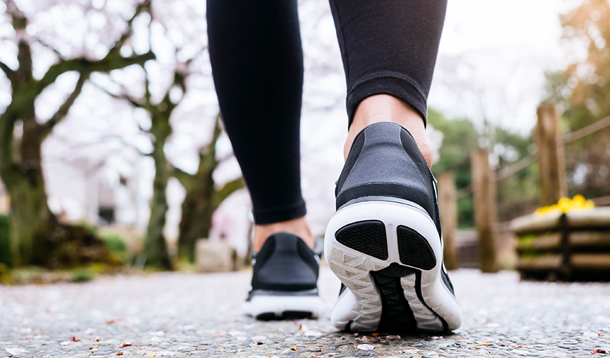
Walking is one of those great equalizers. Most able-bodied people can walk for exercise, even if they are limited by conditions, injuries, or a lack of fitness to walking alone. Walking provides fantastic toning for the lower body and builds cardiovascular endurance with minimal pressure on your joints. And most people LOVE walking! Walking gets you places, keeps you fit, and entertains you. But have you ever been out for a lovely, brisk walk only to be blown past by a runner (or, worse, a pack of runners) and felt entirely not. good. enough?
Freaking runners...all sleek tights, lightning-focused, and deficient of body fat... pushing through pain in the pursuit of higher fitness... why can't that be you? Well, it can, walker. It can.
First you must understand the difference between walking to get to the corner store and walking for fitness. Walking to get to the corner store gets you off your ass and equipped with that milk you need for your tea. Walking for fitness feels challenging, makes you winded just like any other cardiovascular activity, and gives you a great burn in the legs and butt. The key is to exercise at an intensity that feels challenging for you. As trainers, we use the Rating of Perceived Exertion Scale, a scale of 1-10 (or 6-20 sometimes, but let's keep it simple) that describes the intensity of a particular exercise for the exerciser. That's you, by the way. A warm-up walk or walk to the store on a cold day when you don't want to linger would be about a level 3-4 on the RPE scale. A brisk walk with the dog that you can maintain at a steady state for a half hour or more is probably about a 5-6 on the RPE scale. Hitting that big hill you usually try to avoid without slowing down might take you up to a 7-8 on the RPE scale for a minute or two. You get the idea.
Knowing how hard to push yourself is key, and by pushing yourself you can use walking to reap most of the same benefits those smug runners are enjoying. But what if a walk just doesn't thrill you anymore? Feels too easy? Doesn't get your heart rate & RPE up the way it used to when you were less fit? Or suppose you are used to higher impact exercise and are restricted to walking, either temporarily or permanently due to an injury? How can you get that muscle burn you crave and athletic body you want from walking?
Simple. Add High-Intensity Interval Training to your walks, 2-3 days per week. High-intensity intervals are proven to burn more fat, improve cardiovascular capacity and prevent metabolic syndrome & type-2 diabetes far better than steady-state exercise. That includes steady-state running, people. So the next time a half-marathoner chugs past you in the park, you can be just as smug. Not to mention you're home eating lunch before she has even hit her turnaround point.
Use these walking interval programs two to three times per week after warming up, based on your own RPE, to take your walking—and your fitness—to the next level:
Want to up the ante even more?
Go get em, walkers!